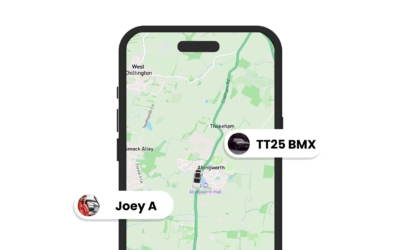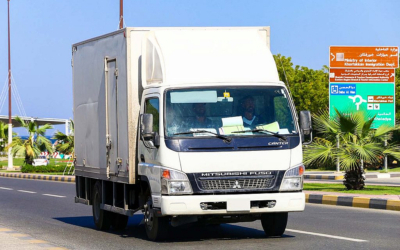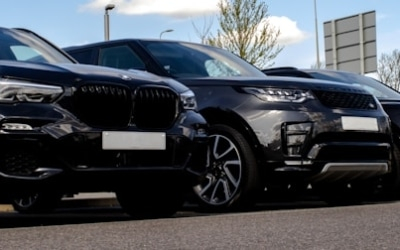Beacons are a small piece of technology with a big impact on how you run a fleet. Whether you manage vans, taxis or rental cars, understanding beacon signal behaviour helps you improve asset visibility, reduce losses and streamline day-to-day operations. This guide is written for fleet managers who want practical, no-nonsense advice on how beacon range and accuracy affect operations, and what to do about it.
Why Beacon Performance Matters to Fleet Managers
Operational use cases
Beacons are used in a surprising number of fleet scenarios: key and asset tracking, monitoring driver behaviour in shared vehicles, enabling precise geofencing for last-mile deliveries, and recognising when accessories are removed or misplaced. If the beacon signal is unreliable you get blind spots in your Tracking data, delayed alerts and frustrated customers. In short, solid beacon performance converts raw radio packets into dependable, actionable information for your operations team.
Safety, security, and compliance implications
Signal range and accuracy affect how quickly you can react to theft, unauthorised use or accidents. A beacon that reports inconsistently makes it harder to prove route adherence or verify stop events for compliance. For fleets that rely on integrated Security workflows, a few metres of inaccuracy can be the difference between a rapid recovery and a lost asset.
Cost and service-level impacts
Poor beacon performance raises operational costs through extra manual checks, repeat customer calls and increased vehicle downtime. Conversely, optimised beacon placement and configuration reduce false alerts and cut the time technicians spend chasing phantom problems. In other words, accurate beacon data supports stronger SLAs and better customer satisfaction.
How Beacon Technology Works
Bluetooth LE basics and beacon protocols
Most beacons use Bluetooth Low Energy advertising packets. They broadcast identifiers like UUID, major and minor values that listening devices pick up. Two common flavours you will hear about are iBeacon and Eddystone. These differ mainly in the payload and ecosystem support, but both operate on the same BLE fundamentals: short, periodic broadcasts designed to be low power and easy to scan.
Key signal metrics (RSSI, Tx power, advertising interval)
Three numbers matter when you evaluate beacon performance. Received Signal Strength Indicator (RSSI) tells you how strong the received signal is, transmit power (Tx power) determines how far the signal starts off, and the advertising interval sets how often packets are sent. Tweak any of these and you change apparent range, battery life and detection latency.
Beacon hardware types and form factors
Beacons come as tiny fobs, puck tags, adhesive tags and integrated telematics modules. Battery size, antenna design and casing affect both robustness and signal quality. Choose form factors that suit the vehicle environment – a puck on a dashboard behaves differently to a tag hidden under a seat.
Factors Affecting Range and Accuracy
Environmental influences
The world between beacon and receiver is rarely empty. Metal vehicle bodies, dense cargo, concrete loading bays and urban canyons all reflect and absorb radio waves. Multipath reflections create variable RSSI readings that make distance estimates noisy. Even weather has an effect; heavy rain can increase attenuation in certain scenarios. Expect real-world range to be significantly different from lab claims.
Hardware and configuration variables
Antenna quality, battery voltage, and firmware all play a role. A poorly matched antenna loses gain, low battery reduces Tx power and aggressive power-saving firmware increases packet loss. Configuration choices are a trade-off: raise Tx power and you increase range but shorten battery life. The right balance depends on your operational priorities.
Placement and mounting geometry
Where you mount the beacon matters more than most fleet managers expect. Line-of-sight placements tend to give the cleanest RSSI-to-distance relationship. Mounting inside a metal box, under thick upholstery or near other radios will degrade performance. Often the simplest change – moving a tag a few centimetres – produces the biggest improvement.
Want to see how optimised beacons work in a real fleet? Book a personalised Book demo with Traknova and we will walk you through placement guidelines, configuration and monitoring dashboards tailored to your operation.
Measuring and Testing Beacon Performance
Key metrics and tools to use
Measure RSSI distributions, packet loss rates and scan success frequency. Use smartphone scanning apps for quick checks, and dedicated scanners for repeatable lab-style tests. Loggers that record timestamped RSSI are invaluable when you want to convert signal behaviour into meaningful distance estimates. Track these metrics over time so you can spot degradation before it becomes a problem.
Test methodologies for fleet settings
Run a mix of static grid tests, drive-by sweeps and in-vehicle scenarios. Static tests help you map baseline attenuation; drive-by tests let you see how detection changes at operational speeds; in-vehicle tests reveal interference from electronics and cargo. Combine these methods for a practical picture that matches day-to-day reality.
Interpreting results and setting thresholds
Don’t expect perfect distance readings. Instead, set pragmatic thresholds for alerts based on observed RSSI ranges and probability of detection. Use smoothing algorithms and multi-sensor fusion to reduce false positives. Document the expected detection envelope for each mounting type so your operations team knows what to trust.
Best Practices for Fleet Deployment and Optimization
Placement, mounting, and redundancy strategies
Place beacons where they have the clearest path to receivers while being protected from damage and tampering. For critical assets consider redundancy – two cheaper tags spaced apart often outperform a single expensive one hidden in a poor location. Rooftop mounting, interior mounting near windows, and strategic use of adhesive pucks can all be part of a sensible deployment plan.
Configuration and tuning guidance
Start with a conservative advertising interval and medium Tx power, then tune per vehicle type. For high-turnover assets you might prioritise short intervals for fast discovery. For parked assets prioritise battery life with longer intervals and lower Tx power. Keep a record of configuration templates by vehicle class to simplify rollouts.
Ongoing maintenance and monitoring
Monitor beacon health remotely where possible: battery level, packet counts and firmware status. Schedule battery replacement cycles and push firmware updates centrally. Use KPIs like detection uptime and false alert rate to keep the system optimised. Regular audits catch placement drift and physical damage before they impact operations.
Security, Privacy, and Operational Considerations
Beacon security and spoofing risks
Beacons are simple radios, and that makes them susceptible to spoofing if you do not plan for it. Use rolling IDs, challenge-response schemes or authenticated payloads where possible to prevent attackers from injecting false signals. Design operational checks so that a single beacon read does not trigger high-impact actions without corroborating evidence from GPS or telematics.
Data privacy and compliance
If you use beacons for driver presence or passenger detection, consider privacy implications. Inform drivers and staff about the purpose of tracking, keep retention policies tight and anonymise data where you can. Good privacy practice protects your business and helps you avoid regulatory headaches.
Integration with fleet telematics and alerting workflows
Beacons should not be a standalone silo. Feed their events into your core Fleet Management platform so alerts are correlated with GPS, engine data and dash cam events. This layered approach improves accuracy and reduces false alarms in your operational workflows.
Conclusion
Beacon range and accuracy are rarely a single technical problem – they are a mix of hardware choices, placement, environment and configuration. For fleet managers the goal is simple: make beacon data reliable enough to inform decisions without creating extra work from false positives. With smart testing, pragmatic thresholds and integrated monitoring you can turn beacons into dependable building blocks for better fleet operations.
FAQs
How far do beacons typically reach?
In ideal line-of-sight indoor or outdoor conditions a Bluetooth beacon can be detected at tens of metres, but expect practical range in vehicles to be much less due to metal and obstructions. Always validate in your own environment.
Will increasing Tx power always improve accuracy?
Increasing Tx power can extend detection, but it does not make distance estimates more accurate. It may also reduce battery life and increase interference. Use a balanced approach and test empirically.
Can beacons replace GPS for vehicle location?
No. Beacons are best used as a complementary layer for close-range presence, unlock/lock logic and asset-level detection. For continuous geo-tracking you still need GPS-based Tracking solutions.
Ready to see beacon optimisation in action? Book a tailored Book demo with Traknova and we will show you deployment plans, dashboard examples and measurable ROI for your fleet.
We’d love your feedback. Did this guide answer your beacon questions, or is there a specific problem you need help with? Please tell us what you’d like to read next and share this article on social media if you found it useful. Which beacon challenge are you currently facing in your fleet?
Prefer a chat? Contact us to arrange a consultation or schedule an on-site survey. And if you manage dash cam installs, check our notes on Best Dash Cam Mounting Positions for Fleet Managers to pair camera and beacon strategies.









